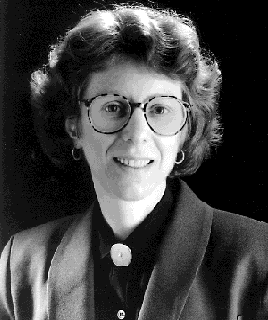
1 February 1996 Gross Picture I usually make my best finds when I'm not looking for anything. Or maybe I'm just repeating that popular romantic cliché because of this afternoon's experience. I was poking around on the Internet and found a site published by one of my favorite radio stations. And there, I discovered how the people to whom I've listened for years really spell their names. The Italian names were the biggest surprise: Sylvia Piogioli is really Sylvia Poggioli, and the Mariatsi brothers are really the Magliozzi brothers. Twé Vu is Thuy Vu, and even good old Linda Worthheimer is Linda Wertheimer. At least Norm Howard is Norm Howard. [I would have discovered this years ago had I sent the radio station some money in response to one of their plaintive appeals for donations. Since the head of the "nonprofit" broadcasting organization was getting paid a couple hundred thousand dollars a year, though, I kept my money in the neighborhood by patronizing Bus Stop Liquor.] The best parts of this afternoon's explorations, though, were the pictures: at last I could see the voices' faces. Plucky Norm Howard (who uses his sonorous tenor--or baritone, if he's in the mood--to put a subversive spin on the news whenever he can get away with it) looks like your typewriter repairman. Maia Krache disproved my theorem that all Maias look like goddesses. And from the subject of goddess it's only a tiny lateral move to Terry Gross. Terry Gross is the thinking fella's seductress. (Or at least that's what thinking fellas think when they do think.) What is it is about her voice? She never sounds overtly sensual, and certainly never sexual. It follows that my fantasies of an evening with her aren't that different than those of my friends: sitting on a couch drinking a really good bottle of red wine (or perhaps two), munching on perfectly cooked asparagus and discussing what a prescient writer H.G. Wells was. My fantasy never go further than that; I know very little about Wells. I suppose the real basis of her appeal is her broadcast interviews: she always treats everything every guest says as if it were just about the most exciting, brilliant and profound thing she had ever heard. She makes everyone with whom she talks look like a genius, except when she vivisects someone who deserves it (like Nancy Reagan) just to remind everyone who's really in control. My picture of Terry Gross was generated entirely by her voice; I never saw a picture of her until today. (Victor is the only person I know who's ever seen a photograph of her before. When I asked him what she looked like he replied "Brunette, curly hair. Kind of like Ina." Since Victor's wife Ina is both smart and attractive, I knew I was on to something.) Finally seeing her photograph after so many years had to be a disappointment, and it is. It looks like it's a PR photo made in a studio with too many lights. It is a PR photo made in a studio with too many lights. Generic Caucasian. Or maybe that's what she wants me to think. Since hundreds of thousands of men (and not a few women) are harmlessly infatuated with her, she can't exacerbate the situation by being seen with a shaved and tattooed head, black patches of makeup under each eye like a linebacker, and a white silk tuxedo with thick leather fingerless gloves studded with rhinestones. That would be too much.
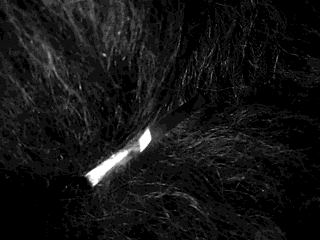
2 February 1996 Desiree Hair Tonight confirmed my opinion that Fearghas is the best of hosts. This is the first time I've been at a party where all the salmon wasn't eaten. There was even beer and wine left at three in the morning, too. This is probably also the last time this will happen. It was a memorable evening. I also met Desiree. (That is her real name.) I enjoyed talking with her, even though I couldn't understand why she is a snake. She had never seen her hair from the back, but of course she couldn't have. It was all very confusing. It was a memorable evening.
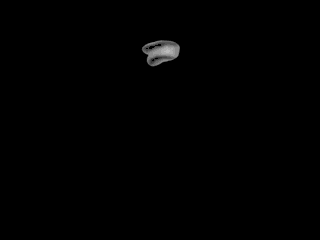
3 February 1996 In Support of Censorship I am sorry, but today's original notebook entry has been almost entirely deleted by the censor. I began projecting this as a way of letting other people see my sketches, observations, works in progress, et cetera. I've enjoyed the new sensation of getting responses to work that no one else would ever see. At the same time I am aware that this is no longer a "real" notebook since I now know it has an audience. In addition to my closest friends, that audience will soon include potential sponsors. There are things I cannot say or show. I was being naïve if I ever thought I could become a publisher without also assuming the related roles of editor and censor. This entry has been approved for publication.
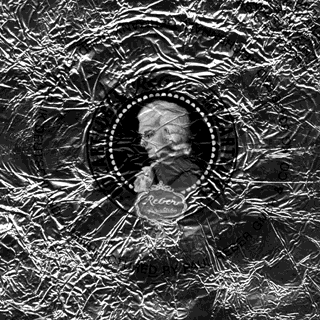
4 February 1996 Composer Balls The Kralers introduced me to Mozart balls, an overpriced confection consisting of marzipan and praline wrapped in thin layers of light and dark chocolate. Mozart balls' only real worth is their gold foil wrapper with a color portrait of Wolfgang A. in full genius drag. That, and that alone, makes them taste like Austria. I told my composer friend John Hilliard that one day people would be celebrating his genius by eating Hilliard balls. He didn't like the idea; he said he'd prefer to have a pool hall named after him. It would be called Hilliard's Billiards. If his dream comes true, I wonder if they'll use billiard balls or Hilliard balls? I prefer billiards to candy. I just had Mozart balls for the first time in over a decade; they're now dome shaped and made in Germany. What's worse, they no longer taste like Austria. Or maybe that's just because I didn't get them from the Kralers.
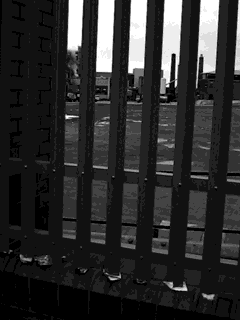
5 February 1996 The Mailing Wall I sometimes buy a salty greasy snack before walking up the hill from the city to my secret mountain hideaway. Two thirds of the way along my route I pass my brewery's northern wall. By this time I am thinking of beer, so I put my empty food wrapper or napkin between the metal grate and bricks to let the brewery workers know that I'm thinking of them. I got the idea from a Jewish friend who told me about faxing god. She said there's a Jerusalem fax machine that accepts calls from anywhere; the faxes are then wadded up and stuffed in chinks in the Wailing Wall so god can read them between appointments. So far I'm the only person leaving messages for the brewers. The West End Wall is almost new; far too young to have its own fax machine.
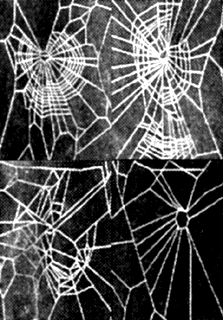
6 February 1996 NASA Spiders on Drugs The United States National Aeronautics and Space Administration gave drugs to spiders to see what would happen. After giving the spiders marijuana, benzedrine, caffeine and chloral hydrate, the spiders created unusual webs. To a lay person, it seemed like a predictable experiment. Predictably, sometimes pictures do serve as mirrors. NASA's hard-working proponents of Calvinist efficiency must see these images as an unambiguous warning against using drugs: that path leads toward abnormality. Others will point to these weird webs as evidence of the purported link between mind-altering substances and creativity: that path leads toward abnormality. I am sure NASA's press office released the photographs of these tangled webs as a cautionary tale; I am less sure if they achieved the desired result. Everyone I know has found these unusual webs much more interesting than the normal variety. For me the most interesting images from this experiment are my mental images of the eight-legged spiders clumsily manipulating microscopic drug paraphernalia under the earnest gaze of NASA scientists. The next time I go to a party I'm going to wear a white lab coat and carry a clipboard.
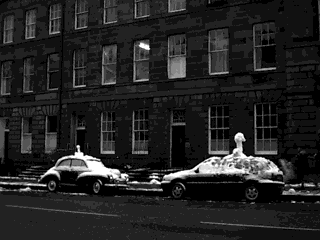
7 February 1996 The Ambiguity of Snow I've been struck by snowballs many times, but on a recent walk through Edinburgh I was struck by snow sculptures. Mushrooms or penises? For sculptors, snow is an ambiguous medium.
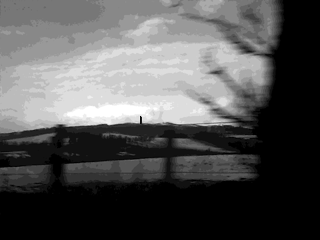
8 February 1996 Folly Art Follies I asked my driver what the large structure atop the hill was. (From a distance, it appeared to be an inverted pyramid some 171 meters tall supported in each corner by a spiral staircase.) "It seems we are in the land of follies," she replied. I was confused until I realized she was using an unfamiliar definition of the word "folly." I was only aware of the usual definitions: "the state or quality of being foolish; lack of understanding or sense ... a foolish action, practice, idea, etc.; absurdity ... a costly and foolish undertaking; unwise investment or expenditure." After consulting a rudimentary dictionary, I discovered that a folly was also "a whimsical or extravagant and often useless structure built to serve as a conversation piece, lend interest to a view, etc." My short semantic excursion ultimately led to wonder whether "art" might serve as a three-character definition of folly. Or perhaps the reverse.
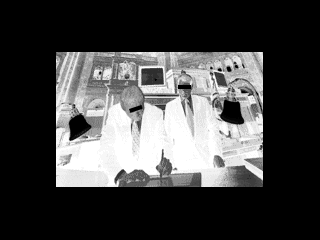
9 February 1996 A Dark Day for Censors Most of the U.S. web sites I visited today had black backgrounds to protest some sort of silly Draconian law the president had just signed. I think this latest witch hunt is called "The Communications Decency Act." Viewed from a few thousand miles away, though, this desperate attempt by some xenophobic would-be big brethren seems like a farce reminiscent of the laws their ancestors passed requiring newfangled motor cars to be proceeded into town by a horse. Since my work doesn't reside on an American server, today my screen is the opposite of black. The only people who should be sad about the "The Communications Decency Act" are the censors. With over a hundred countries on the Internet, the U.S. fascists may never regain control of their cold war creation. It is a delicious irony that the Internet technology designed decades ago to win the world war against totalitarian oppressors is working as intended.
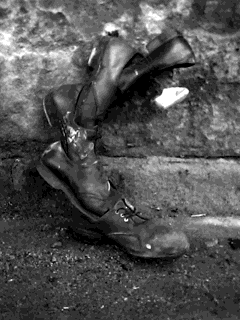
10 February 1996 Unsterile Art I saw a sculpture consisting of a baby boot suspended from an arc of five shoes stuffed into each other. I found it underneath a railroad trestle in the industrial part of the city. I wouldn't have looked twice at it in a gallery, but it seemed elegantly appropriate for its dark alcove. Plinths' antisepticizing qualities are lethal and spotlights are death rays.
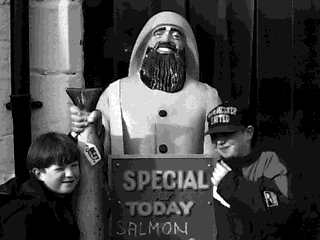
11 February 1996 Spam in the Mall Ten year old Ben, seven year old Joe and two year old Sam are as good as I can imagine children can get. After spending some 24 exhausting hours with my three nephews, though, I am reminded of Cyril Connolly's observation that "There is no more somber enemy of good art than the pram in the hall." All my friends who have been blessed with progeny would disagree, but tonight Cyril will get no argument from me.
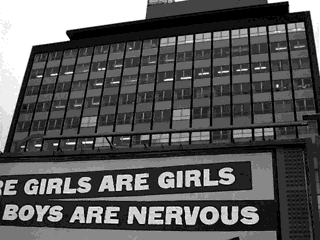
12 February 1996 Office Politics I know a woman who works in this building who successfully blackmailed a coworker. He deserved it.
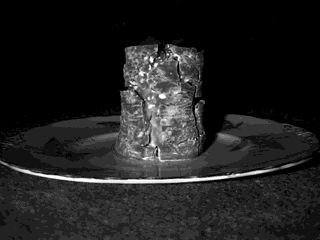
13 February 1996 Pease-pudding Pease-pudding is a strange regional dish that looks and tastes like condensed pea soup. It's not bad, though, if it is spread on thick bread and washed down with lots of good ale. (I suppose there aren't many foods that aren't palatable given enough ale.) Like many canned foods, naked pease-pudding is a gelatinous column. After a couple of weeks, though, the pease-pudding develops hairline cracks that grow into gaping fissures. Furry growths cautiously emerge from the depths of the column, pease-pudding's live spawn. Pease-pudding is glorious.
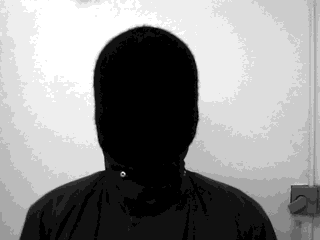
14 February 1996 Assumed Identity Some friends asked me to write about one of my projects for their publication. It should have been straightforward, but they said I couldn't write about myself in the first person. Since I was too lazy to write a thoughtful piece about myself, I simply cloaked myself in an artistic cliché. Subvert the dominant paradigm.
--Earth First! bumpersticker David Glenn Rinehart stole his aesthetic credo from an Earth First! bumpersticker. It is not surprising; he was, after all, trained as a thief, as a photographer. (There is no innocent explanation for the act of photography: it almost always is taking pictures.) A picture here, an idea there ... it was the beginning of a successful criminal career in the arts. By all accounts, though, Rinehart was and still is a petty criminal: an image here, a concept there. When he met the major arts career criminals--the publishers, gallery owners and other members of the organized art crime syndicate--Rinehart was out of his league. And he knew it. Rather than play a losing game with the art cartel, Rinehart has set up his studio on unclaimed turf: the Internet. (There really is honor among thieves.) The move to the Internet was undoubtedly a move of convenience--never underestimate the slothfulness of an artist--but it was also a logical progression. The tens of thousands of pages of work Rinehart has produced in the last few years are on a magnetic disk the size of a small doughnut. And now that doughnut is connected to tens of millions of computers around the world. Rinehart's digital studio, Studio 2020, is available to anyone with Internet access to the World Wide Web. There, a visitor may browse through his notebook, view work designed specifically for the Internet, and leave messages. Rinehart explained the premise of his experiment over improbably large glasses of whiskey. "I can show you everything I've created in the last few years on this notebook computer. I should be able to give everyone the same access to my studio over the Internet." (I may be oversimplifying his arguments, but no more complex thoughts could have survived the whiskey vapors.) And what about the name? "I called it Studio 2020 instead of, say, Rinehart's Studio de la Net because Studio 2020 looks much better on grant applications." I am skeptical of the concept of a perpetually open studio, very skeptical of the Internet as a publishing medium, and entirely skeptical of Rinehart. From whom did he steal this idea? Despite my reservations, though, Studio 2020 is an interesting experiment. Whatever results it yields will be of little consequence, but the questions about producing art for and disseminating work over the Internet should be a catalyst for much discussion and debate in the years ahead. What more could a thief want than unlocked doors? --Paul C. d'Charmmér
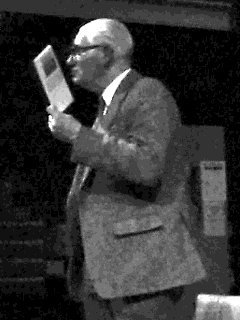
15 February 1996 English Archetypes I went to a lecture where two people discussed the photographs of John Pattison Gibson. My friend John described how Gibson (1838-1912) made romantic, classic photographs of the Northumbrian landscape and Olde Thinges. John's smooth voice in a dark room after a large meal almost lulled me to sleep. The calm didn't last. John was followed by his old professor, Tom Corf, who lectured the crowd as if addressing his usual audience of inattentive students. Corf was like a drill sergeant who hadn't lost his ability to make the young recruits cower. I began to worry that the archetypal English school teacher would humiliate me by making me stand up in front of the audience and asking me a series of questions I couldn't answer. Aside from my anxieties, I quite enjoyed his talk. It was inspiring to see someone apparently in his seventies or eighties with more energy than I've ever had. The best part, though, was that there wasn't a test at the end of the evening.
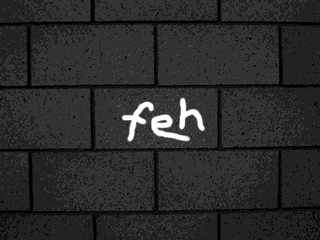
16 February 1996 I've Got Some Words I've got a word and the word is feh,
feh _ _ _ _ _ _ _ _.
I've got two words and the words are feh,
feh feh _ _ _ _ _ _ _.
I've got three words and the words are feh,
feh feh feh _ _ _ _ _ _.
I've got four words and the words are feh,
feh feh feh feh _ _ _ _.
I've got five words and the words are feh,
feh feh feh feh feh _ _ _.
I've got six words and the words are feh,
feh feh feh feh feh feh _ _.
I've got seven words and the words are feh,
feh feh feh feh feh feh feh _.
I've got eight words and the words are feh,
feh feh feh feh feh feh feh feh.
I've got some words and they're all feh,
feh feh feh feh feh feh feh feh feh feh feh feh feh feh feh feh feh feh feh feh feh feh feh feh feh feh feh feh feh feh feh feh feh feh feh feh feh feh feh feh feh feh feh feh feh feh feh feh feh feh feh feh feh feh feh feh feh feh feh feh feh feh feh feh feh feh feh feh feh feh feh ...
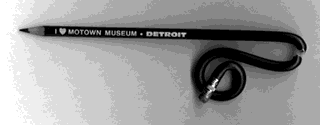
17 February 1996 The Nature of Pencils I had to endure an overly reverential worshiper of Great and Famous Photographers tediously ramble on about Fox Talbot's Pencil of Nature. Yawn. What fascinates me is the nature of pencils. When Sam broke the Motown pencil shaped like a treble clef I discovered there's lead even in the curvy part. After twenty years of photography, that seemed much more interesting.
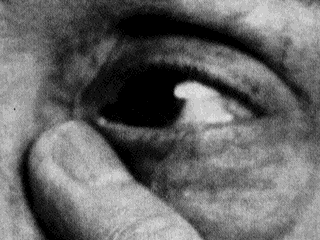
18 February 1996 10,000 Days after Marcel Duchamp Marcel Duchamp died 10,000 days ago. Thus today seems a good day to answer a question I've been pondering for quite a while: is everything art or is nothing art? Today's answer is that everything can be art, but only if it wants to be. Tomorrow's answer will probably be different.
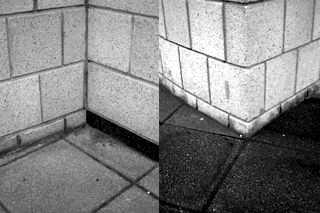
19 February 1996 The Problem With Western Architecture A building's corners are never perfect, regardless of the skill of the architects, artisans and builders. The problem, although universal, does not appear to be serious.
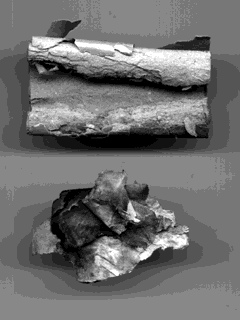
20 February 1996 Blessing in Disguise When I returned to town after dropping off my camera and computer, I heard the sound of gunfire in the distance. It was so loud that I almost instinctively reached for my gun, even though I haven't carried one in years. I soon discovered the sound was coming from hundreds of large firecrackers, part of a Chinese new year celebration. Two dragons were dangling in a smoke-filled street to the music of constant explosions. It was a wonderful sight. I didn't have a camera, but I did have pockets to store the exploded firecracker casings. They proved to be much more visually interesting than dragons; everyone knows what dragons look like.
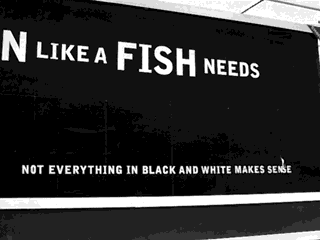
21 February 1996 Too Easy Reproducing cropped advertisements is almost too easy. Some days, though, almost everything else is too hard.
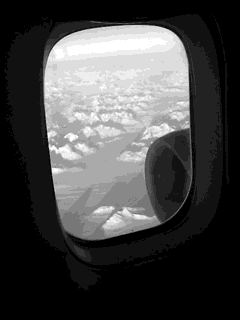
22 February 1996 Plane to See Greenland is the only country in the world that more people have seen than touched.
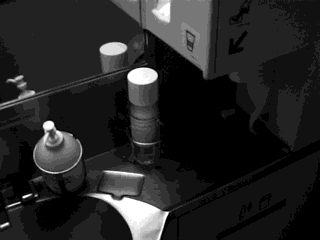
23 February 1996 Essence of 747 I do not understand why airlines put scented soaps and lotions in jet lavatories. Sometimes I use them and sometimes I don't, but after flying a few thousand miles I always smell like a 747.
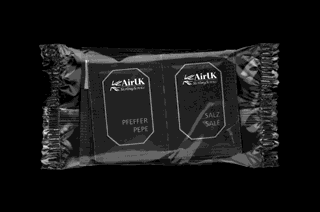
24 February 1996 Salt of the Air Miles above the North Sea a courteous flight attendant gave me a wonderful present. Although her gift was only a few grains of salt, I got an inordinate amount of pleasure from imagining them nested in their immaculate foil packet inside a sealed cellophane envelope inside the aluminum fuselage. I wondered if my salt might have once been in the ocean below. As with most gifts, it is the thought that counts. I poured the salt into San Francisco Bay. I hope the salt harvesting facility on the southern part of the bay will capture the salt and sell it to another airline. That would be nice; salt travels well.
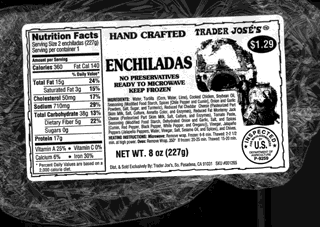
25 February 1996 Trader José's The primary ingredient of tonight's dinner is water. That seems appropriate since most of me is water, as is most of the earth or the biosphere or space or the ocean or matter or something. Tonight's dinner was "inspected for wholesomeness " by the U.S. Department of Agriculture P-9259; I assume it passed. Although these hand-crafted enchiladas from Trader José's (apparently a trademark of Trader Joe's) are my biggest meal of the day, they comprise less than a fourth of the recommended daily intake of fat, cholesterol, total carbohydrates and protein. That's good, I've been putting on a little weight recently. Tonight's meal looks good in the Vitamin A and Iron department too, so it's quite a bargain at $1.29. The only problem is that these enchiladas provide absolutely no Vitamin C. As a safeguard, I'm drinking a half gallon of thick ale to compensate for any dietary deficiencies. I feel good.
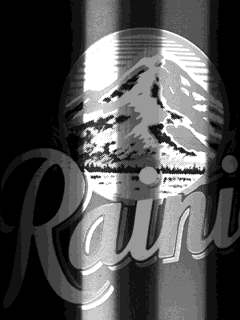
26 February 1996 Rainier Ail Any beverage names after my favorite mountain is bound to disappoint. The beauty of Rainier Ale is that it disappoints so little. I am appalled that some people call this fine malt beverage "green death." Peasants.
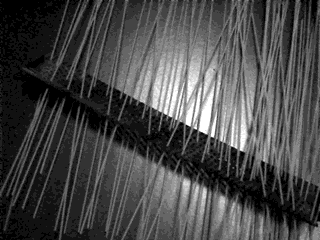
27 February 1996 Pastagraphy Pasta is a medium of tremendous visual potential, most of it unrealized. Some day I will address its aesthetic qualities, but in the interim I shall continue to simply enjoy it with pesto. You cannot go wrong with pasta.
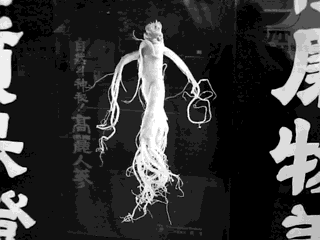
28 February 1996 Ginsong I've never trusted ginseng. Actually, that's not true; I've just never understood ginseng. Ginseng seems inscrutably Chinese, and even more alien since it was appropriated by vacuous new agers. I was wrong about ginseng. Gordon tells me West Virginians grow the best ginseng in the world. He said a good ol' boy gave him some ginseng when he was exhausted, and to his surprise found himself invigorated without the unpleasant side effects of other stimulants. I must try ginseng, perhaps there really is such a thing as benign pep. If Gordon sings its praises it can't be all bad.
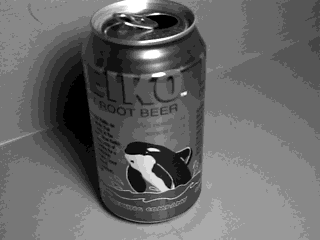
29 February 1996 Drinking for the Whales I drank a can of carbonated water flavored with high fructose corn syrup; it was labeled "Keiko Draft Root Beer with vanilla and natural honey flavor." It tasted like generic cheap root beer. A closer inspection of the can revealed that it was an environmentally-sensitive soft drink, since "A portion of the proceeds from the sale of this product will be donated to the Free Willy-Keiko Foundation, for Keiko's rehabilitation." After all the whales have done for me it was the least I could do for them.
last month | index | next month
©1996 David Glenn Rinehart | 



























